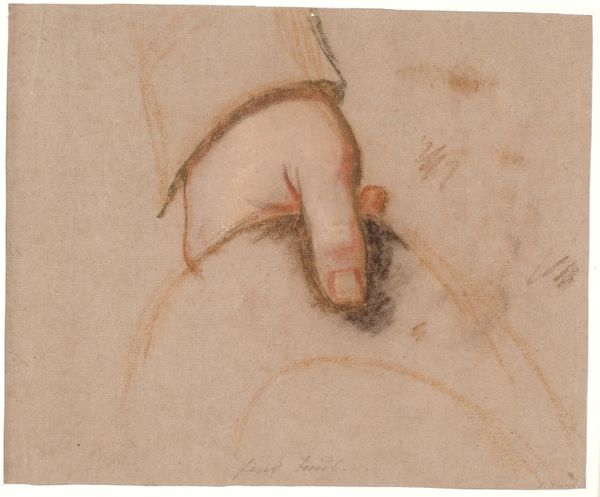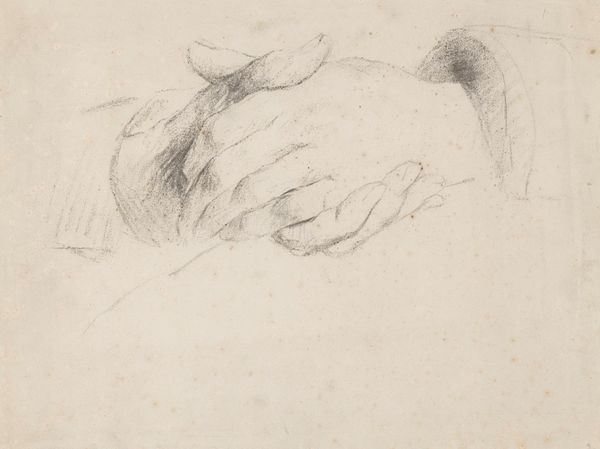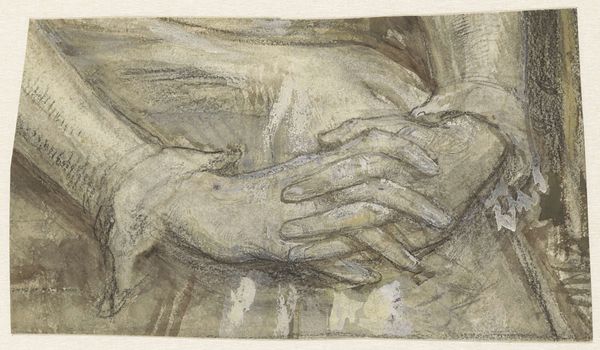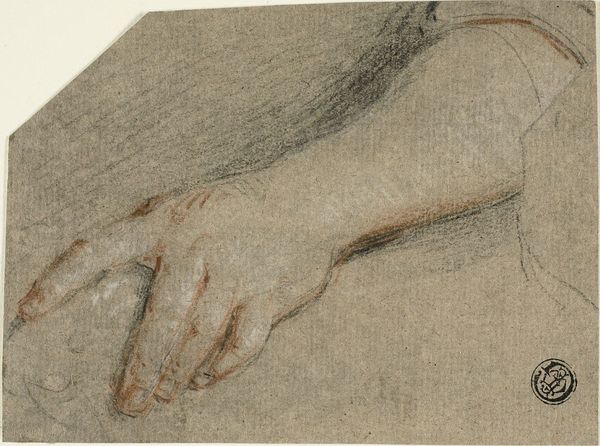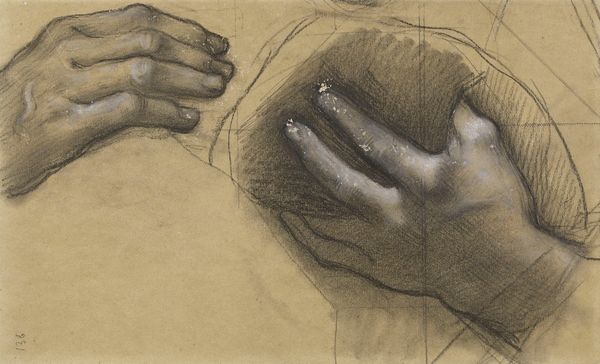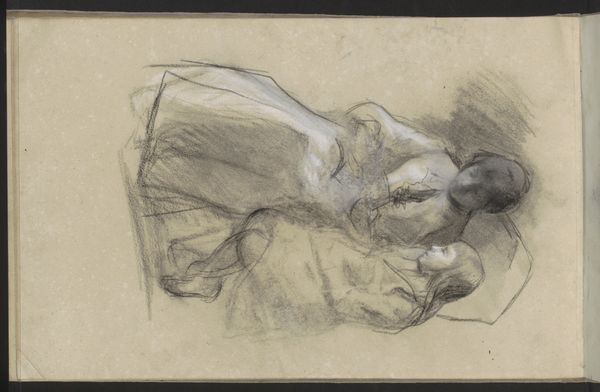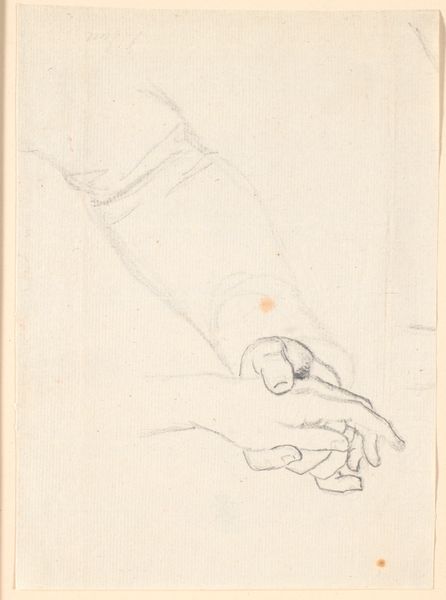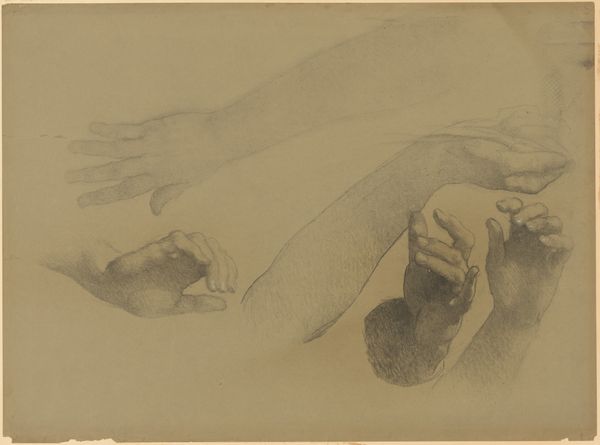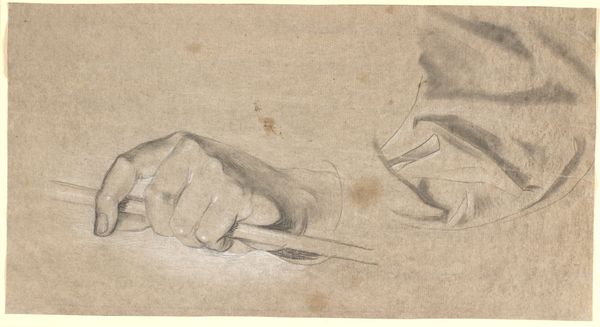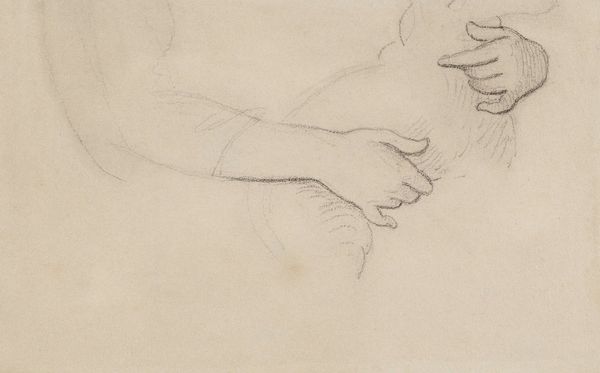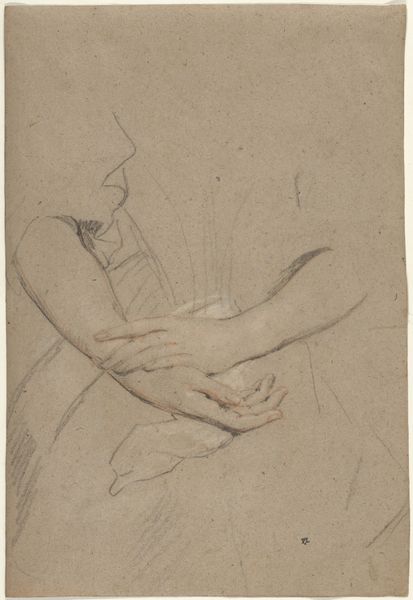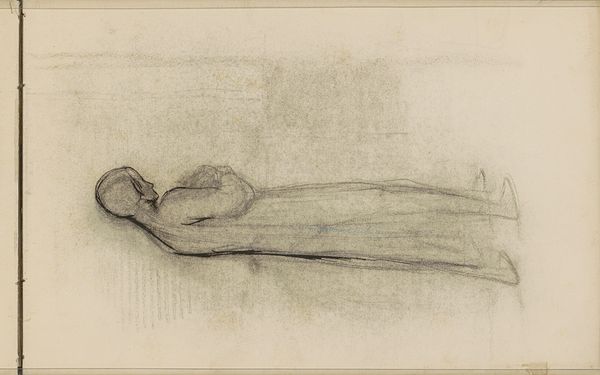
drawing, pencil, pastel
#
portrait
#
drawing
#
pencil
#
portrait drawing
#
pastel
#
academic-art
#
portrait art
Dimensions: 243 mm (height) x 170 mm (width) (bladmaal)
Curator: It’s fascinating how Jens Juel, sometime in the 1790s, captured this reaching gesture in his "Pastel Study of an Outstretched Hand," currently residing here at the SMK. The delicate rendering using pastel and pencil gives it a uniquely tactile quality. Editor: My immediate impression is that it feels so unfinished, so raw. I can see the layers of pigment barely clinging to the paper, almost as if it could be brushed away with a single breath. It really highlights the physical act of making, doesn't it? Curator: Absolutely. It offers an intimate look at artistic practice. The materials themselves, pastel and pencil, are relatively accessible. Juel, though a celebrated portraitist for the Danish elite, is, in this work, engaging with the more grounded, material reality of creating art, laying bare the bones of the image. How labor intensive! Editor: And there is so much potential packed into just this single gesture. What is the hand reaching for? Who does it belong to? There's an almost desperate quality to it, and I’m curious what it symbolizes, perhaps connected to the era’s revolutionary sentiments or even the artist’s own lived experiences? Curator: That desperation you perceive is certainly a reading available to us. In terms of craftsmanship, the visible charcoal under-drawing adds to this idea of a work in progress, documenting a physical struggle to grasp something, quite literally and figuratively, with its many marks. Editor: I find myself reflecting on labor—whose hand is this and what kind of work does it perform in its daily life? Does that context amplify its yearning? A noble’s hand might be seen to represent patronage, generosity, whereas a worker’s would stand for, possibly, something less abstract, sustenance. Curator: Those interpretations are very provocative, especially given the class tensions of the time. We might never be certain, but examining the hand not as an isolated object of beauty, but as a product of social circumstances, deepens our understanding of Juel's artistic project, even in an apparently incomplete piece. Editor: I agree; by viewing it through different lenses—art historical and material but also socioeconomic—it moves beyond mere technical study to a space teeming with layered implications. It makes you question: whose stories get told, whose labors are valued, and who holds the power? Curator: Well, it's a study that clearly keeps providing material for new understandings, even centuries later. Editor: Indeed. Art's power lies not only in the image itself, but in the questions it prompts.
Comments
No comments
Be the first to comment and join the conversation on the ultimate creative platform.

